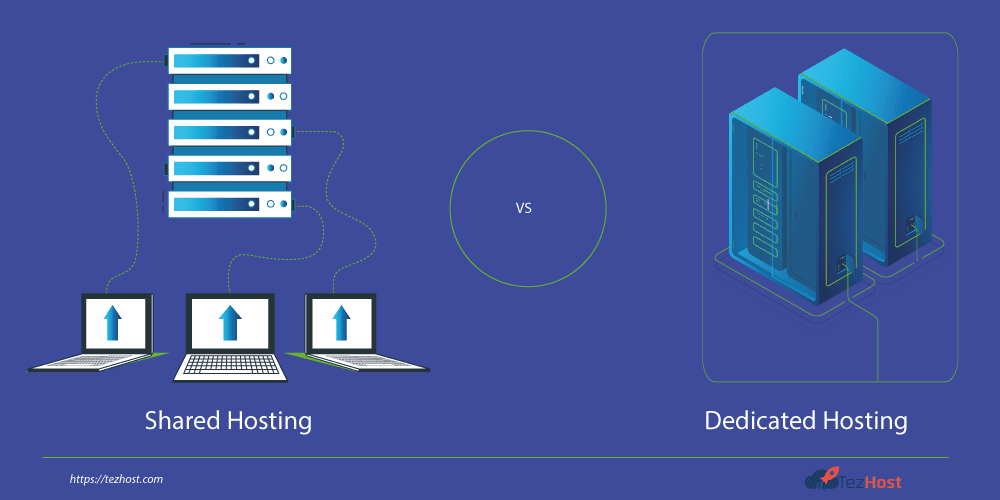Common Issues with Shared Hosting and How to Resolve Them
Shared hosting is popular for website owners searching for a cheap, user-friendly solution. This web hosting service hosts multiple websites on a single server, implying that all websites share the server’s resources. Although shared hosting offers numerous advantages, it also has several typical problems that website owners should be aware of. This blog post will look at some common issues with shared hosting and how to resolve them.
So, let’s dive deeper into the topic!
Understanding the Basics
Shared hosting, as discussed previously, is a type of web hosting in which several websites are stored on a single server while sharing its resources, such as CPU, RAM, and storage. This demonstrates that the server is managed and under the hosting company’s control, with limited influence over the configuration held by website owners.
The ease of setup, low cost, and lack of technical knowledge make shared hosting popular for website owners. It is perfect for small enterprises, individual blogs, and websites with weak traffic demands that only use a few server resources.
Although shared hosting has numerous advantages, it frequently has drawbacks, including additional maintenance, security holes, and performance problems. Website owners must evaluate these issues and fix them.
Common Issues with Shared Hosting and How to Resolve Them
Let’s look at website owners’ most common issues with shared hosting and what steps website owners can take to resolve the common issues associated with shared hosting.
1. Lack of Control
The Issues
One of the most significant issues with shared hosting is website owners’ lack of control over the server’s configuration. Here are some common examples:
- Limited Customization Options
Shared hosting providers often limit the software and configurations website owners can use on the server. This can frustrate website owners who need to install custom software or make specific configuration changes.
- Limited Access to Server Resources
Shared hosting providers often restrict the CPU, RAM, and storage that website owners can use. This can result in slow loading times and limited scalability as the website grows.
Website owners on shared hosting plans do not have root access to the server, so they cannot make low-level changes to its configuration. This can limit the flexibility and customization of the hosting environment.
The Solutions:
To address the lack of control, website owners can consider the following:
- Evaluate Hosting Provider Options
Website owners should research different hosting providers to find one that offers the customization options and server access they need.
- Use a content delivery network (CDN)
The load placed on a single shared server can be reduced using CDNs to distribute a website’s content across several servers.
- Utilize a content management system(CMS)
CMSs allow website owners to manage their content without having to have extensive technical skills.
2. Security Vulnerabilities
The Issues:
Shared hosting environments can also pose security risks to websites. Here are some common examples:
A security compromise on one website could affect all other websites on the same server because several websites are hosted on the same server. This means that website owners must be informed of the security procedures used by their co-hosted websites and their hosting company.
Shared hosting often means that websites share the same IP address. This can lead to security issues, such as being blocked by spam filters or search engines due to the actions of other websites sharing the same IP address.
Some shared hosting providers do not provide SSL support, which can leave websites vulnerable to security breaches and negatively affect their search engine ranking.
The Solutions:
To address security vulnerabilities, website owners can consider the following:
- Use a Reputable Hosting Provider
Website owners should choose a hosting provider with a good security and data protection reputation.
- Implement SSL Certificate
An SSL certificate can help protect website data and provide a secure connection between the website and the user’s browser.
- Use Security Plugins or Software
Website owners can use security plugins or software to monitor their websites for security threats and vulnerabilities.
3. Performance Issues
The Issues:
Shared hosting can also lead to performance issues affecting website speed and user experience. Here are some common examples:
Because the server’s resources are shared among multiple websites, websites on shared hosting plans can experience slow loading times, especially during peak traffic.
Shared hosting plans often have limited resources, making it difficult for websites to handle sudden increases in traffic or resource demands.
Because multiple websites are hosted on the same server, any issues that affect the server can potentially affect all websites, resulting in inconsistent uptime and website availability.
The Solutions:
To address performance issues, website owners can consider the following:
Website owners can optimize their website content to reduce the load on the server and improve website speed.
- Implement Caching Solutions
Caching can help improve website performance by reducing the number of requests to the server.
- Upgrade to a Higher Hosting Plan
Website owners can upgrade to a higher hosting plan that offers more resources and better performance.
TezHost Shared Hosting Services
TezHost is a reliable and affordable shared hosting provider that offers a range of features and resources to help website owners get their websites up and running quickly and easily. Here are some of the benefits of using TezHost shared hosting services:
Cost-effective:
TezHost shared hosting plans are affordable and ideal for small businesses or individuals who are just starting and don’t have high traffic or complex technical needs. This makes it an excellent option for those who want to save money while enjoying reliable hosting services.
Security Measures:
TezHost takes security seriously and implements various measures to ensure that websites hosted on the servers are secure. This includes regular software updates, malware scanning and removal, and free SSL and firewall protection.
Resource Optimization:
TezHost shared hosting plans come with a range of resources such as disk space, bandwidth, and email accounts that can be optimized to ensure that websites run smoothly and efficiently.
Upgrading Options:
As websites grow and require more resources and customization, TezHost offers the opportunity to upgrade to higher hosting plans or consider other hosting options, such as VPS or dedicated hosting.
Easy-to-Use Control Panels:
TezHost provides an easy-to-use control panel that allows website owners to easily manage their websites, domains, email accounts, and other hosting-related tasks.
Fast and Reliable Servers:
TezHost uses fast and dedicated servers located at the best possible places in Finland, USA, and Germany. It ensures websites load quickly and are always available to visitors.
Conclusion
Shared hosting is popular for website owners searching for a cheap and user-friendly hosting solution. It does, however, have several common issues that website owners should be aware of. Website owners can fix these common issues and make sure their website is safe, quick, and reliable by comparing hosting providers.
If you’re looking for a reliable and affordable shared hosting provider, TezHost is an excellent option. By choosing TezHost, you can enjoy a range of features and resources to help you get your website up and running quickly and easily.
If you’re interested in learning more about TezHost’s shared hosting services or have any questions about how it can help you build and manage your website, don’t hesitate to contact the customer support team for further details.
TezHost Editorial
TezHost Editorial staff is a team of Marketing experts lead by Arif Wali
Comment:






No Comments yet!